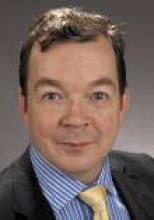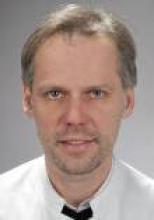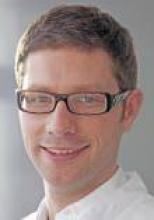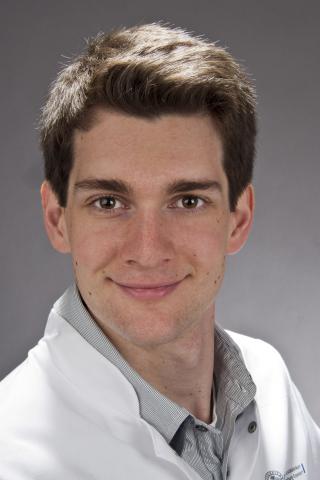- Home
- About
- Partners
- Newcastle University
- University of L'Aquila
- University of Manchester
- Alacris Teranostics GmbH
- University of Pavia
- Polygene
- Consiglio Nazionale delle Ricerche
- INSERM
- Certus Technology
- Charité Universitaet Medizin
- GATC Biotech
- University Medical Center Hamburg Eppendorf
- Evercyte GmbH
- University Hospital of Cologne
- PRIMM Srl
- University of Freiburg
- University of Antwerp
- Finovatis
- Research
- SYBIL at a glance
- Bone
- Growth plate
- Desbuquois dysplasia
- Diastrophic dysplasia
- MCDS
- Osteopetrosis
- Osteoporosis
- Osteogenesis imperfecta
- Prolidase deficiency
- PSACH and MED
- Systems biology
- SOPs
- Alcian Blue staining
- Bone measurements
- BrdU labelling
- Cell counting using ImageJ
- Chondrocyte extraction
- Cre genotyping protocol
- DMMB assay for sulphated proteoglycans
- Densitometry using ImageJ
- Double immunofluorescence
- Electron microscopy of cartilage - sample prep
- Extracting DNA for genotyping
- Grip strength measurement
- Histomorphometry on unon-decalcified bone samples
- Immunocytochemistry
- Immunofluorescence
- Immunohistochemistry
- Quantitative X-ray imaging on bones using Faxitron and ImageJ
- Skeletal preps
- TUNEL assay (Dead End Fluorimetric Kit, Promega)
- Toluidine Blue staining
- Toluidine Blue staining
- Von Kossa Gieson staining
- Wax embedding of cartilage tissue
- Contact Us
- News & Events
- Links
- Portal
University Medical Center Hamburg Eppendorf
 The Department of Osteology and Biomechanics at Hamburg University School of Medicine, which was founded in 2010 (before it was part of the Department of Trauma Surgery), is specialized on the osteologic assessment of patients and on research regarding the molecular mechanisms underlying skeletal development and remodelling. The average number of employees (including postdocs and students, both MD and PhD) is in the range of 20-30 persons. The department is divided in three units, patient care, molecular and translational research. The major and most specific expertise lies in the possibility to analyze bone biopsies using non-decalcified histology and histomorphometry. This is not only performed for human biopsies, but also for the skeletal analysis of genetically modified mouse models. Especially regarding the latter aspect it is important that the Department has a large histological archive of mouse models with various phenotypes, but also a large dataset on gene expression in cultures bone cells derived form these models.
The Department of Osteology and Biomechanics at Hamburg University School of Medicine, which was founded in 2010 (before it was part of the Department of Trauma Surgery), is specialized on the osteologic assessment of patients and on research regarding the molecular mechanisms underlying skeletal development and remodelling. The average number of employees (including postdocs and students, both MD and PhD) is in the range of 20-30 persons. The department is divided in three units, patient care, molecular and translational research. The major and most specific expertise lies in the possibility to analyze bone biopsies using non-decalcified histology and histomorphometry. This is not only performed for human biopsies, but also for the skeletal analysis of genetically modified mouse models. Especially regarding the latter aspect it is important that the Department has a large histological archive of mouse models with various phenotypes, but also a large dataset on gene expression in cultures bone cells derived form these models.
University Medical Center Hamburg Eppendorf roles in SYBIL
UKE will participate in WP3 by the generation of various animal models of CSDs and RSDs. For the deep phenotyping approach (WP4) we will serve as a core facility for the analysis of skeletal phenotypes of genetically modified mouse models, and we will participate with own molecular studies on mouse models of CSDs and RSDs (especially related to the regulation of bone formation). We will also provide our dataset, where we have performed genome-wide expression analysis of osteoblasts, osteoclasts and chondrocytes from various models and from wildtype mice following stimulation with different ligands. UKE is also the WP7 leader.
Facilities available at UKE include core facilities for genome-wide expression analysis and for the generation of genetically modified mouse modelsand for the assessment of skeletal phenotypes in mice and humans.
UKE researchers involved in SYBIL
 Prof Michael Amling – Head of Department, more than 15 years of scientific experience, mostly through the histologic and histomorphometric analysis of skeletal phenotypes (for instance in the identification of a hypothalamic control of bone formation by the hormone leptin, CELL, 2000)
Prof Michael Amling – Head of Department, more than 15 years of scientific experience, mostly through the histologic and histomorphometric analysis of skeletal phenotypes (for instance in the identification of a hypothalamic control of bone formation by the hormone leptin, CELL, 2000)
 Prof Thorsten Schinke –Vice Chair of the Department, more than 10 years of scientific experience, mostly through the molecular analysis of genetically modified mouse models (for instance in the role of gastric acidification in osteopetrosis, Nat. Med., 2009)
Prof Thorsten Schinke –Vice Chair of the Department, more than 10 years of scientific experience, mostly through the molecular analysis of genetically modified mouse models (for instance in the role of gastric acidification in osteopetrosis, Nat. Med., 2009)
 Florian Barvenick, MD (M), Head of the osteologic patient care, more than 5 years of scientific experience, mostly through deep phenotyping of patients with skeletal disorders (for instance in characterizing patients with hypophosphatasia, Osteoporosis Int., 2011)
Florian Barvenick, MD (M), Head of the osteologic patient care, more than 5 years of scientific experience, mostly through deep phenotyping of patients with skeletal disorders (for instance in characterizing patients with hypophosphatasia, Osteoporosis Int., 2011)
 Timur Yorgan - junior staff member, a PhD student working on the role of Notch and Wnt signalling in bone remodeling.
Timur Yorgan - junior staff member, a PhD student working on the role of Notch and Wnt signalling in bone remodeling.


